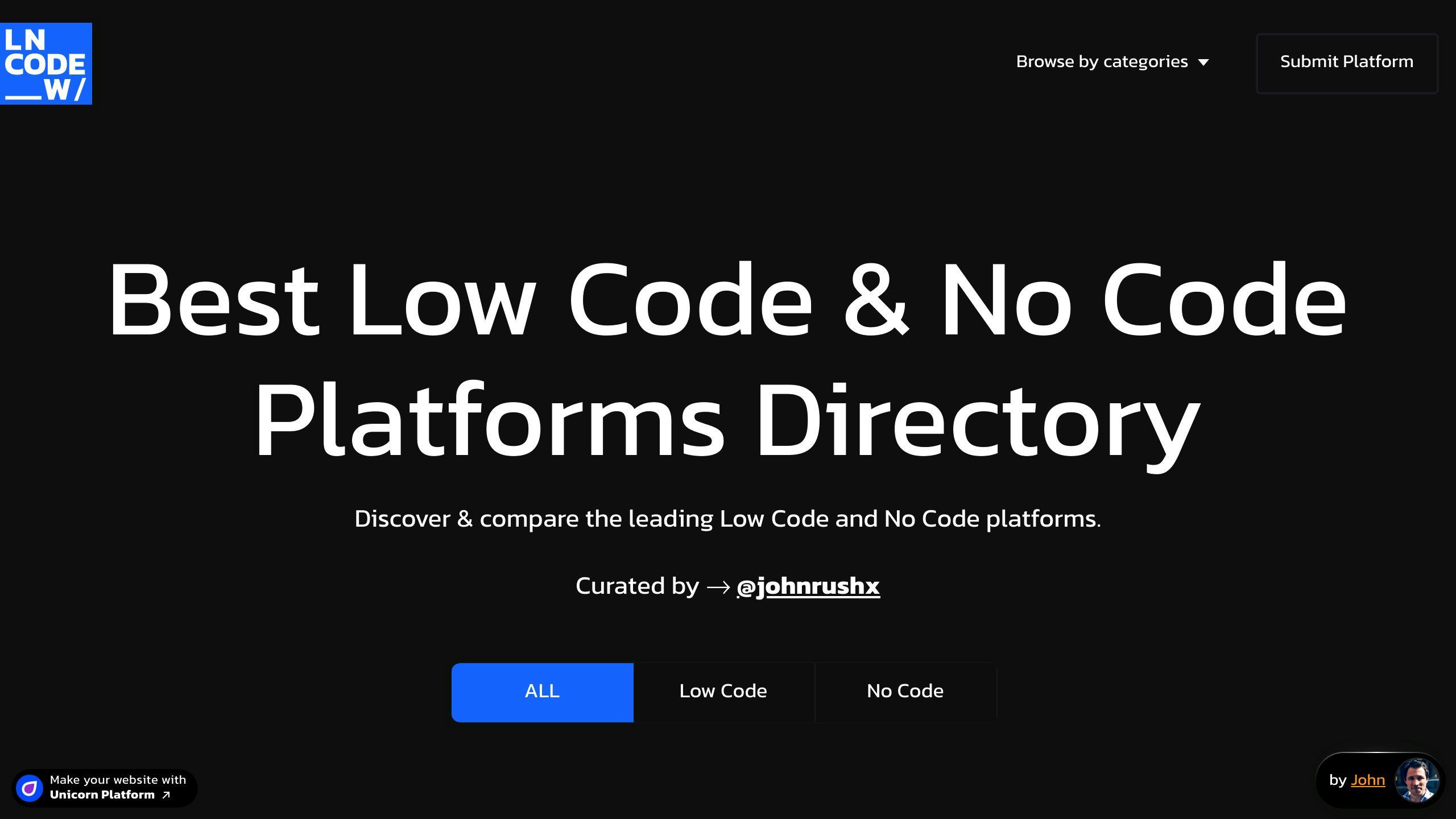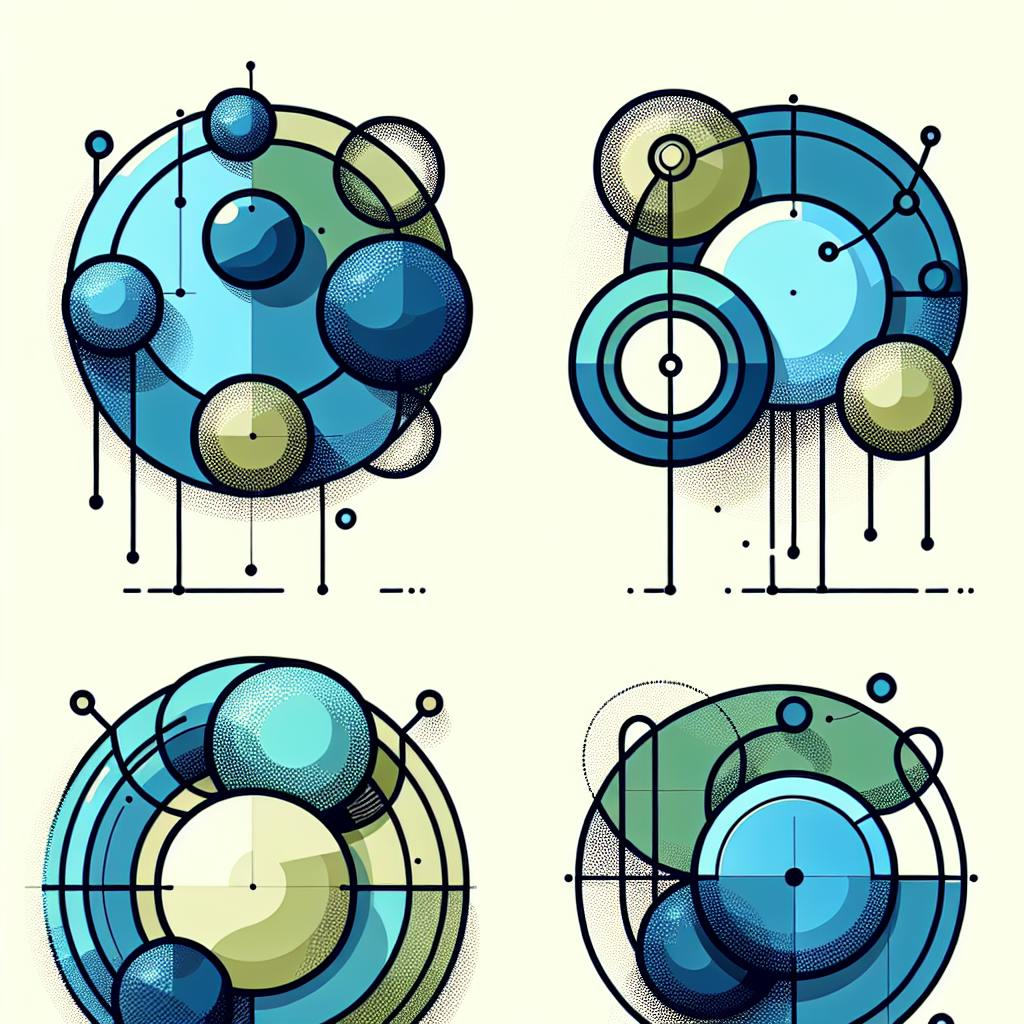No-code machine learning (ML) platforms simplify time series analysis by providing automated data preparation, feature extraction, and model selection. This allows users without coding expertise to gain insights from their time series data and make informed decisions.
Related video from YouTube
Key Benefits of No-code ML
- Unlock Potential: Gain valuable insights from time series data
- Drive Decisions: Make data-driven decisions based on insights
- Accessibility: Enable non-technical users to leverage ML
Getting Started with No-code ML
- Prepare Data: Clean, format, and transform time series data
- Select Features: Choose relevant features through correlation analysis and feature engineering
- Handle Missing Data and Outliers: Use techniques like imputation, winsorization, and robust regression
Popular No-code ML Platforms
| Platform | User-Friendly | ML Capabilities | Time Series Support |
|---|---|---|---|
| Microsoft Power BI | Very | Basic | Yes |
| KNIME Analytics Platform | Moderate | Advanced | Yes |
| DataRobot | Very | Advanced | Yes |
| Obviously AI | Very | Advanced | Yes |
| Squark | Moderate | Advanced | Yes |
Forecasting Time Series with No-code ML
- Import time series data
- Choose forecasting models (e.g., neural networks, ARIMA, Prophet)
- Set model parameters via user-friendly interface
- Train and evaluate models
- Visualize forecasting results
Advanced Techniques
- Anomaly Detection: Identify unusual patterns in data
- Multivariate Forecasting: Predict multiple dependent variables simultaneously
- Incorporate External Factors: Include external variables like economic indicators or weather data
- Hierarchical Forecasting: Combine forecasts at multiple levels (e.g., region, product, time)
Best Practices
- Ensure data quality
- Choose appropriate models for the problem and data traits
- Validate models using metrics and avoid overfitting
- Monitor performance and update models regularly
Limitations
- May struggle with complex patterns and non-linear relationships
- Scalability and speed issues with large datasets
- Lack of interpretability and transparency
- Integration challenges with existing workflows and infrastructure
sbb-itb-9890dba
Getting Ready for No-code ML
Preparing Data
To get your time series data ready for no-code machine learning, you need to clean and format it properly. Here are some key steps:
- Data cleaning: Remove any unnecessary or incorrect data points, handle missing values, and fix errors.
- Time indexing: Make sure your data is properly indexed by time, which is crucial for time series analysis.
- Data transformation: Convert your data into a suitable format for analysis, such as changing categorical variables into numerical variables.
Understanding Time Series Components
Time series data has several key components:
- Trend: The overall direction or pattern of the data.
- Seasonality: Periodic fluctuations that occur at fixed intervals.
- Cyclicity: Long-term patterns that occur over time.
Understanding these components is important for accurate modeling.
Selecting Features
Choosing the right features is critical for no-code ML with time series data. Here are some tips:
- Correlation analysis: Look at how different features relate to the target variable to identify the most relevant ones.
- Feature engineering: Create new features by combining or transforming existing ones.
Handling Missing Data and Outliers
Missing data and outliers can impact model performance, so you need to handle them properly:
- Imputation: Replace missing values with estimated values based on the available data.
- Winsorization: Replace outliers with values closer to the median or mean of the data.
- Robust regression: Use regression techniques that are resistant to outliers.
No-code ML Platforms for Time Series
No-code machine learning (ML) platforms make time series analysis simpler and more accessible. Here are some popular options:
Platform Overview
- Microsoft Power BI: Business analytics with visualizations and intelligence tools.
- KNIME Analytics Platform: Open-source data integration and analysis.
- DataRobot: Cloud-based automated machine learning.
- Obviously AI: No-code predictive modeling.
- Squark: Cloud platform for data analysis, ML, and visualization.
Feature Comparison
| Platform | User-Friendly | ML Capabilities | Time Series Support | Pricing |
|---|---|---|---|---|
| Microsoft Power BI | Very | Basic | Yes | Free/Paid |
| KNIME Analytics Platform | Moderate | Advanced | Yes | Free/Open-source |
| DataRobot | Very | Advanced | Yes | Paid |
| Obviously AI | Very | Advanced | Yes | Paid |
| Squark | Moderate | Advanced | Yes | Paid |
Pricing and Deployment
- Microsoft Power BI: Free version and paid subscription.
- KNIME Analytics Platform: Free and open-source.
- DataRobot, Obviously AI, and Squark: Paid subscriptions with varying pricing tiers.
Low Code & No Code Platforms Directory

The Low Code & No Code Platforms Directory lists and compares various no-code ML tools. It provides details on features, pricing, and deployment options to help users choose the right platform for their time series analysis needs.
Forecasting Time Series with No-code ML
Importing Data
The first step is to import your time series dataset into the no-code ML platform. You can upload your data file or connect to a data source like a database or cloud storage. Once imported, use the platform's data exploration tools to inspect and understand your dataset.
Choosing Forecasting Models
Next, choose a forecasting model from the options provided by the platform. These may include neural networks, ARIMA, and Prophet models. Consider your data's characteristics, such as seasonality, trends, and anomalies, when selecting a model. You can also use the automated model selection feature to recommend the best model for your data.
Setting Model Parameters
Set the model parameters using the user-friendly interface. This allows you to adjust settings like hyperparameters, number of hidden layers, learning rate, and batch size for neural networks, or the order of differencing for ARIMA models, without coding expertise.
Training and Evaluating Models
Train the model using your dataset. The platform's automated training and evaluation features enable you to train and evaluate the model without writing code. Evaluate the model's performance using metrics like mean absolute error (MAE) and mean squared error (MSE).
Visualizing Results
Finally, visualize the forecasting results using the platform's visualization tools. These may include charts, graphs, and tables to help you understand the model's performance and identify areas for improvement.
Advanced Time Series Techniques
Detecting Anomalies
Spotting unusual patterns in time series data can reveal significant events or errors. No-code ML tools provide ways to find these anomalies, helping you identify and respond to odd data patterns. By using automated anomaly detection, you can reduce errors and improve forecast accuracy.
To detect anomalies, no-code ML platforms often use:
- Statistical methods: Mean absolute deviation, modified Z-score
- Machine learning algorithms: One-Class SVM, Local Outlier Factor
- Density-based methods: DBSCAN
These techniques work with various time series data, like sensor readings, financial transactions, and website traffic.
Multivariate Forecasting
Multivariate forecasting predicts multiple dependent variables at once. This approach is useful when variables are interconnected. No-code ML platforms make multivariate forecasting easier with user-friendly model selection and configuration.
Some applications of multivariate forecasting include:
| Application | Example |
|---|---|
| Multiple product sales and revenue forecasting | Predicting sales for various products |
| Energy consumption and production forecasting | Forecasting energy usage and generation across regions |
| Analyzing weather patterns' impact on crops | Predicting crop yields based on weather data |
By using multivariate forecasting, you can better understand how variables relate and make more accurate predictions.
Incorporating External Factors
Adding external variables to your time series analysis can improve forecast accuracy. No-code ML platforms let you easily include external factors like economic indicators, weather data, or special events in your models.
For example, in tourism, considering external factors like holidays, weather, and economic conditions can enhance demand forecasts. By accounting for these external influences, you can create more reliable models.
Hierarchical Forecasting
Hierarchical forecasting combines forecasts at multiple levels, like forecasting sales by region, product, and time period. No-code ML platforms provide tools for hierarchical forecasting, giving insights into your data at different aggregation levels.
Hierarchical forecasting is useful in industries with hierarchical data structures, such as:
- Retail: Forecasting sales by region, product, and time
- Finance: Forecasting revenue by department, product, and quarter
- Healthcare: Forecasting patient outcomes by hospital, department, and diagnosis
Best Practices for No-code ML
Data Quality
- Clean data: Remove incorrect values, fix errors, and handle missing data to prevent model issues.
- Use relevant features: Choose features that impact model performance.
- Monitor data: Regularly check for quality issues and address them.
Choosing Models
- Consider the problem: Select models suited for forecasting, classification, regression, etc.
- Understand data traits: Pick models that handle seasonality, trends, non-stationarity, etc.
- Balance complexity: Find a middle ground between model complexity and interpretability.
Validating Models
- Split data: Divide data into training, validation, and testing sets.
- Use metrics: Evaluate performance with metrics like mean absolute error (MAE) or mean squared error (MSE).
- Avoid overfitting: Monitor and adjust hyperparameters to prevent overfitting.
Monitoring and Updating
| Task | Description |
|---|---|
| Monitor performance | Regularly check model performance and adjust hyperparameters. |
| Update models | Incorporate new data, pattern changes, or trend shifts. |
| Revalidate models | Ensure updated models continue performing well. |
Limitations of No-code ML
No-code ML has made time series analysis more accessible, but it has some drawbacks. Here are some limitations to consider:
Complex Patterns
No-code ML models may struggle with intricate patterns and relationships in time series data. For example, they may not handle non-linear relationships, seasonality, or trends effectively, leading to inaccurate predictions.
Scalability and Speed
As the volume of time series data grows, no-code ML models may slow down and become less accurate. They may not be designed to handle large-scale datasets, making it challenging to apply them to complex time series analysis.
Interpretability
No-code ML models can be difficult to interpret, making it hard for users to understand and explain their predictions. This lack of transparency can lead to mistrust, especially in critical applications like finance or healthcare.
Integration
No-code ML solutions may not easily integrate with existing business workflows and IT infrastructure. This can make implementation challenging, particularly in organizations with complex systems and processes. Integrating no-code ML may also require significant resources and expertise.
Handling Complex Patterns
| Limitation | Description |
|---|---|
| Non-linear relationships | No-code ML models may struggle to capture non-linear patterns in time series data. |
| Seasonality | Models may not effectively handle seasonal fluctuations in the data. |
| Trends | Identifying and accounting for long-term trends can be difficult for no-code ML models. |
Performance Challenges
| Limitation | Impact |
|---|---|
| Large datasets | No-code ML models may not be designed to handle massive volumes of time series data. |
| Slower processing | As data size increases, processing times may become slower and less efficient. |
| Decreased accuracy | With larger datasets, the accuracy of no-code ML models may decrease. |
Interpretability and Trust
- Lack of transparency: No-code ML models can be "black boxes," making it difficult to understand how they arrive at predictions.
- Mistrust in critical applications: This lack of interpretability can lead to mistrust in the models, especially in high-stakes applications like finance or healthcare.
Integration Challenges
1. Existing workflows: No-code ML solutions may not easily integrate with an organization's current business processes and workflows.
2. IT infrastructure: Integrating no-code ML into an organization's existing IT infrastructure can be complex and resource-intensive.
3. Resource requirements: Implementing no-code ML solutions may require significant resources, including time, expertise, and financial investment.
While no-code ML has revolutionized time series analysis, it's essential to be aware of these limitations and consider them when choosing the right solution for your needs.
Future of No-code ML for Time Series
Improving No-code ML Tools
No-code ML platforms will get better at:
- Automation: Automating more tasks for easier use.
- Scalability: Handling larger datasets efficiently.
- User Experience: Providing simpler, more intuitive interfaces.
New algorithms will be developed to better understand complex time series patterns, seasonality, and trends. This will lead to more accurate predictions and better decision-making.
New Techniques
Researchers are exploring using deep learning models like:
- Recurrent Neural Networks (RNNs)
- Long Short-Term Memory (LSTM) Networks
These models can learn intricate patterns and relationships in data, improving forecast accuracy.
Wider Access to Time Series Analysis
No-code ML tools are making time series analysis accessible to more people beyond data scientists, such as:
- Business users
- Analysts
- Domain experts
With no coding required, organizations can tap into the expertise of their entire workforce for better-informed decisions.
Industry Impact
No-code ML for time series analysis will significantly impact various industries:
| Industry | Applications |
|---|---|
| Finance | Predicting stock prices, detecting anomalies, identifying investment opportunities |
| Healthcare | Disease diagnosis, patient outcome prediction, resource allocation |
| Retail | Inventory management, demand forecasting, supply chain logistics |
As no-code ML evolves, we'll see more innovative applications across industries.
Conclusion
Let's summarize the key points about no-code machine learning for time series data and encourage you to explore this field further.
Main Takeaways
No-code ML platforms make time series analysis accessible to non-technical users by:
- Enabling rapid model development and deployment
- Providing pre-built models and algorithms to improve accuracy
- Reducing errors through automation
Getting Started with No-code ML
If you're interested in implementing no-code ML solutions, here are some tips:
| Tip | Description |
|---|---|
| Choose the Right Platform | Select a no-code ML platform that fits your needs and skill level |
| Start Small | Begin with a simple project and gradually scale up as you gain experience |
| Experiment and Learn | Try new things and learn from your mistakes |
Learning Resources
To further your knowledge and get support, consider these resources:
- Platform Documentation: Explore tutorials provided by no-code ML platforms
- Online Courses: Take courses to deepen your understanding of no-code ML and time series analysis
- Community Forums: Join forums and discussion groups to connect with other users and experts
FAQs
What is time series AI?
Time series AI refers to using artificial intelligence (AI) and machine learning (ML) to analyze and forecast data that is collected over time. This involves training models on historical data to predict future events or trends. Time series AI is useful in industries like finance, retail, and healthcare, where accurate forecasting can guide business decisions and drive growth.
With no-code ML platforms like Akkio, users without extensive technical knowledge can build and deploy predictive models for their time series data. By leveraging AI and ML, users can uncover insights from their data and make informed decisions to support business success.



